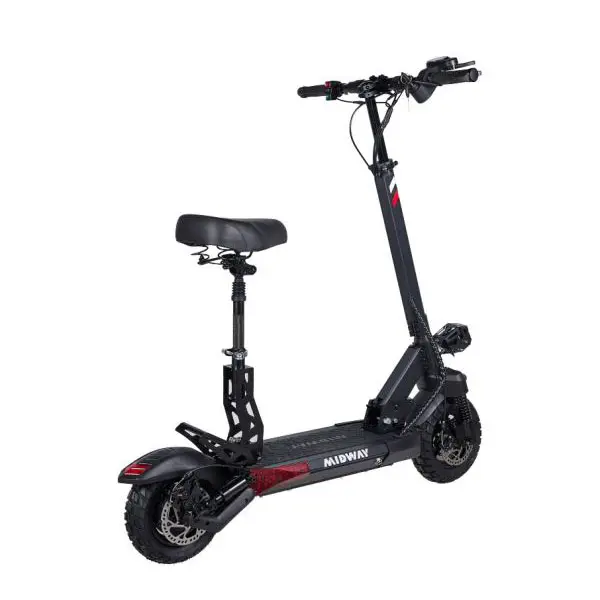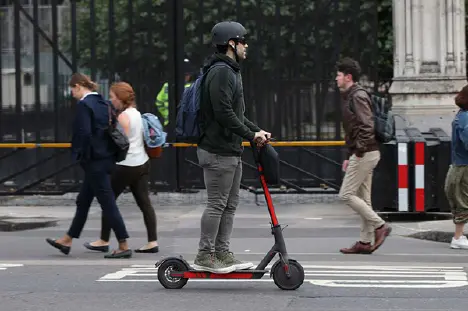Where are the electric scooter rental areas in London?
Which areas are covered by the electric scooter rental service in London?
Electric scooter rental service in London is an increasingly popular urban transportation mode, which provides citizens and tourists with a flexible, economical and environmentally friendly travel option. Here are the main areas covered by the electric scooter rental service in London:
1. Participating boroughs
According to information from Transport for London (TfL), the electric scooter rental service currently covers the following boroughs in London:
Camden
City of London
Ealing (East only)
Hammersmith & Fulham
Kensington and Chelsea
Lambeth (North only)
Richmond upon Thames
Southwark
Tower Hamlets (including Canary Wharf and limited parking at some TfL sites)
Westminster
Citizens and tourists in these areas can legally rent and use electric scooters in designated areas in the above boroughs.
2. Private land development projects
In addition to public roads, Lime's electric scooters can also be used in participating boroughs and private land development projects in London. This means that electric scooter rental services may also be available in certain private properties, such as commercial centers or residential areas.
3. Specific business areas
Canary Wharf, as a specific business area, has also provided e-scooter rental services since June 2021, including three suppliers: Dott, Lime and TIER
4. Expansion coverage plan
TfL and the London City Council plan to expand the service to the south of Lambeth and add about 190 new parking spots in the area. This shows that the coverage of the e-scooter rental service is expected to be further expanded.
5. Availability of the service
The e-scooters provided by Voi can be parked in any blue zone in London and there are designated parking spots. This shows that Voi's rental service covers a wide area of London and provides a convenient parking solution.
Conclusion
London's e-scooter rental service has covered multiple boroughs and specific business areas, providing a convenient way for citizens and tourists to travel. As the service expands and the coverage increases, e-scooters are expected to become more popular in the future as a green travel option. For those who want to experience this service, just download the app of the corresponding operator, complete the registration and follow the safety guidelines to get started.

How does London's e-scooter service differ from other cities?
London's e-scooter service has some unique features and differences compared to other cities:
Legalization and pilot projects:
London got a late start in the legalization of e-scooters. Compared with many European and American countries, London did not start to accelerate the legalization and pilot projects of e-scooters until 2020. This is compared with other countries such as France and Germany, which have allowed e-scooters to be legally on the road earlier
Pilot area restrictions:
London's e-scooter service was initially limited to six boroughs and areas for piloting, including Canary Wharf, Ealing, Hammersmith and Fulham, Richmond, the City of London and Kensington and Chelsea. The use of this geo-fencing technology limits the scope of use of e-scooters, while some other cities may allow wider areas to use.
Speed limit:
The maximum speed of e-scooters in London is limited to 12.5 miles per hour (about 20 kilometers per hour), which is lower than the national maximum speed limit of 15.5 miles per hour. This speed limit helps improve safety, but it may also affect commuting efficiency.
Conditions of use:
In London, electric scooters can only be used on motor vehicle lanes and bicycle lanes, not on sidewalks. In addition, users must take an online safety course before renting for the first time. These regulations raise the threshold for use, and London pays more attention to safety and standardization than other cities.
Operators and prices:
Electric scooter services in London are provided by several operators, including Dott, Lime and TIER, and prices are set by the operators themselves. This is different from the situation in some cities where the government may have unified pricing or fewer operators participating in the market.
Environmental protection and healthy travel:
Part of the reason for London's promotion of electric scooters is to reduce car traffic and improve air quality. This promotion strategy based on environmental protection and health is different from other cities that may focus more on economic benefits or traffic congestion relief.
Restrictions on private electric scooters:
Although London allows the rental of electric scooters, it is still illegal for privately owned electric scooters to be driven in British areas. This is in contrast to the situation in some other countries where private electric scooters are allowed on the road.
In summary, London's electric scooter services are different from other cities in terms of legalization process, pilot area restrictions, speed limits, usage conditions, operators and prices, environmental protection and healthy travel, and restrictions on private electric scooters. These characteristics reflect London's specific considerations and policy orientations in electric scooter services.

What are the biggest challenges London faces in promoting e-scooter services?
The biggest challenges London faces in promoting e-scooter services mainly involve the following aspects:
1. Regulatory balance
London is seen as a growth market for e-scooter sharing services, but the right regulatory balance is crucial to creating a successful market for operators and safe conditions for city residents. The e-scooter market in London is heavily regulated, which makes it difficult for some operators to compete with unregulated providers, affecting the attractiveness of the service. Therefore, how to formulate regulations that both protect citizens and attract operators is a major challenge.
2. Use of digital regulation
Digital regulation, also known as geo-fencing, can dictate riding and parking areas for e-scooter users. However, cities should use this technology with caution, as it can be inaccurate and too many unnecessary regulations can make micro-mobility services unattractive.
3. Parking coverage
If the city has a mandatory parking plan for e-scooters, users must end their rides in parking bays. Adequate parking coverage is necessary to ensure good service and reduce parking problems
4. Liability and safety issues
E-scooter companies, as transportation providers operating on public streets, need to address two main policy challenges: regulation and rider liability. Clarifying the responsibilities of e-scooter riders and providers is becoming increasingly important, especially as the frequency of accidents increases
5. Accessibility of micro-mobility
The report also states that operators have a responsibility to make the use of e-scooters and e-bikes safe for both riders and pedestrians. This includes using tools such as fines and rewards to encourage safe riding and parking, and working with local governments to provide micro-mobility training for new riders
6. Environmental impact and sustainable development
London's climate emergency is one of the biggest threats facing today, and the mayor has declared a climate emergency and is taking decisive action, including a commitment to make London a net zero carbon city by 2030. As a fully electric means of transport that produces no harmful emissions, electric scooters are considered a sustainable mode of transport that can help reduce congestion and improve London’s air quality
7. Challenges for operators
Operators need to optimize operations, improve product quality, develop rapid growth strategies, and increase funding to ensure market leadership
In summary, the biggest challenge facing London in promoting electric scooter services is how to find the right regulatory balance between protecting citizens, attracting operators, and ensuring safety and environmental sustainability.














